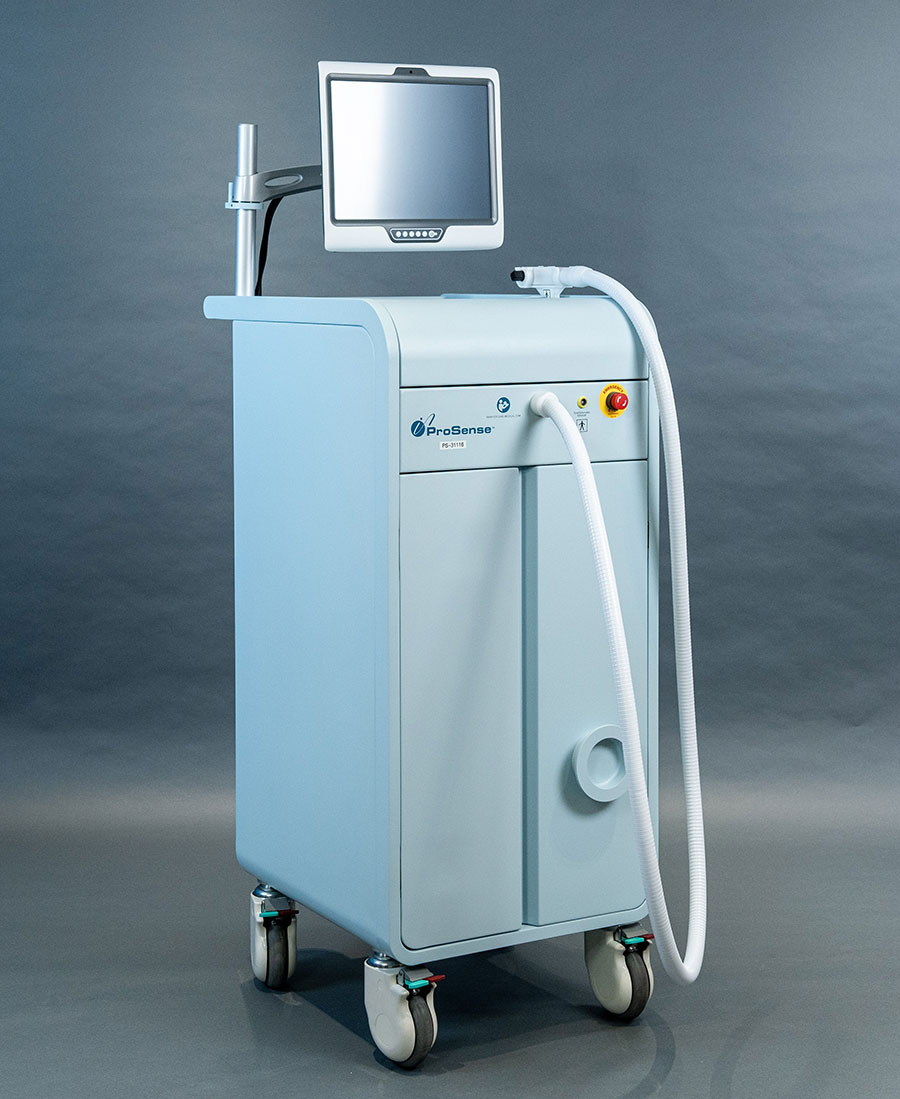Cryoablation: The latest treatment for breast tumors
How cryoablation works
Cryoablation destroys non-cancerous breast tumors (fibroadenomas) by freezing them at below -170°C, the temperature at which tumor cells die. A needle as small as 3 mm in diameter injects liquid nitrogen through the tip of needle which is inserted through the skin and into the tissue to be removed. The tumor quickly freezes causing the cells to die. Ultrasound is utilized during the procedure to clearly locate the tumor and monitor the size of the ice ball. Patients are left with a small scar of only 3 mm.
.jpg)
Who performs the procedure?
The procedure will be led by a surgeon specializing in breast surgery working with a multidisciplinary team of doctors.
Who is cryoablation recommended for?
- Over the age of 18 who have been diagnosed with fibroadenoma with a core needle biopsy
- With a lump in the breast that is painful or palpitates
- With a tumor 1-4 cm in size that can be pinpointed by ultrasound
- With a tumor that grew by 20% during the last six months as identified during the last check-up
- Who have multiple tumors but don’t want multiple surgeries and scars
- Who have no prior history of breast cancer
- Who are not pregnant
- With tumors that are not close to the skin
- With no serious illnesses
What are the advantages of cryoablation?
Cryoablation is a non-invasive surgery, and therefore has many benefits:
- Only local anesthesia is required
- Scar is small, only 3 mm in length
- Less painful than other procedures
- There is no need to stay overnight in hospital
- Recovery is quick
- The breast maintains its shape because there is no damage to normal breast tissue
The recovery process
- After the procedure, patients might feel slight pain: symptoms can be relieved with over-the-counter painkillers like paracetamol
- Wear a bra 24 hours a day
- Apply a waterproof plaster for at least 72 hours
- No exercise or heavy lifting for three days
- Bruising is slight, if any, and will go away on its own within seven days
- Return for a check-up with the doctor after seven days
How long before the tumor is gone?
Tumor cells are destroyed during the procedure, and the body will produce new, healthy cells to replace them. At first, the patient might still feel a lump, but this will shrink until gone, and this process can be monitored by ultrasound. The length of time until the lump disappears varies from patient to patient, depending on the initial size of the lump and other factors. Studies show that:
- Six months after the procedure, some lumps are completely gone while others might remain, albeit smaller
- One year after the procedure, lumps are smaller with blurred edges, or have disintegrated
- Two years after the procedure, no lumps remain
For more information please contact:
Last modify: February 27, 2024